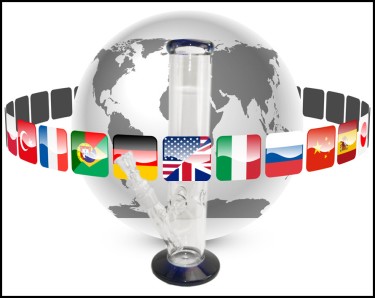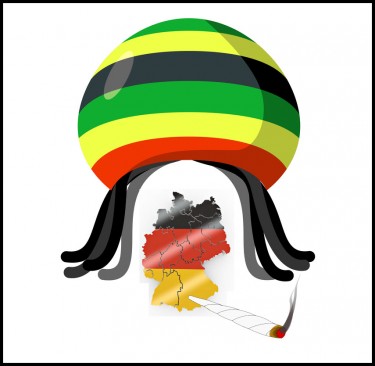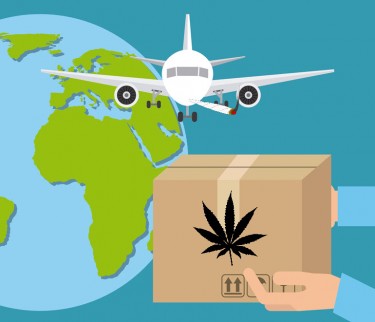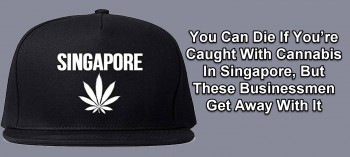
International Drug Treaties: Do They Mean Anything?
A combination of three distinct but complementary United Nations treaties shapes the framework for international law as regards global drug control regime. These treaties are;
-
the Single Convention on Narcotic Drugs, 1961, as amended by the 1972 Protocol
-
the Convention on Psychotropic Substances, 1971, and
-
the Convention Against Illicit Traffic in Narcotic Drugs and Psychotropic Substances, 1988.
These treaties were developed to help set up relevant control measures on drugs internationally. The treaties aim to make sure psychoactive substances are accessible for scientific and medical purposes while impeding access to illicit channels. The treaties also feature general outlaws on the use and trafficking of psychoactive substances. These drug control treaties are mutually complementary and supportive with one addressing issues and problems the others fail to put to check.
Let us have a deeper look into each of these treaties and the situations they address.
Single Convention on Narcotic Drugs, 1961, as amended by the 1972 Protocol
The Single Convention on Narcotic Drugs, 1961 commonly called C61 is a global treaty that monitors the activities (supply, production, use, trade) of distinct narcotic drugs. The treaty also puts in place a regulatory system for the scientific and medical use of these narcotic drugs. The regulatory system encompasses research, licensing, and the establishment of various measures for treatment.
The Single Convention on Narcotic Drugs was adopted by the United Nations in 1961 and was enacted in December 1964. The purpose of the Convention is to reduce drug abuse by restricting access to specific drugs and global cooperation.
The Convention intends to tackle drug abuse through collaborative global action. Under this treaty, there are two types of control and intervention that work hand in hand. The first intervention looks to limit the use, possession, distribution, export, import, and trade of drugs specifically for scientific and medical purposes. The second intervention involves a war on drug trafficking via collaborative International efforts to discourage and curb drug traffickers.
Previous treaties had only managed coca, opium, and other derivatives like heroin, cocaine, and morphine. However, the C61 looks to do more. The Convention centralized previous treaties and expanded their range to encompass cannabis and additional substances with similar effects to drugs already under supervision.
Although it remains uncertain if the C61 Convention calls for the criminalization of possession of drugs for personal use. This is because the treaty's language is vague and should likely need the intervention of the International Court of Justice to decisively resolve the issue.
Nonetheless, several commissions have tried to grapple with the question. But, excluding the LeFain Commission, a larger percentage of states have enacted legal possession for personal use.
As regards the monitoring and supervision of proper enactment of the Convention, in every member state, the UN Office on Drugs and Crime (UNODC) is in charge of such responsibility. It is also responsible for coordinating local authorities whenever needed.
Convention on Psychotropic Substances of 1971
The Convention on Psychotropic Substances of 1971 was also designed by the United Nations treaty to regulate psychoactive substances like barbiturates, psychedelics, amphetamine-type stimulants, and benzodiazepines. The treaty was signed in Vienna, Austria on the 21st of February 1971.
The Convention on Psychotropic Substances of 1971 had to be enacted given the Single Convention on Narcotic Drugs of 1961 did not address a lot of the recently discovered psychotropics. This is because the scope of C61 was restricted to drugs like coca, opium, and cannabis-like effects.
The 1971 Treaty put in place a global regulatory system for psychotropic substances. The Convention acknowledges the expansion and diversification of the scope of drugs of abuse, hence establishing controls on several synthetic drugs. The controls are based on each drug's potential abuse as well as its therapeutic value.
In 1960, psychotropic substances became widely accessible and the authorities were against them for several reasons. They argued that arises from the negative health impact, the use of psychotropic substances led to reduced moral principles.
The combination, which features export and import restrictions among other regulations, looked to restrict drug use for medical and scientific purposes and was enacted on the 16th of August 1976. As of 2013, 183 member states are Parties to the treaty.
United Nations Convention against Illicit Traffic in Narcotic Drugs and Psychotropic Substances of 1988
This is the third and final Treaty of the United Nations International Drug Treaties. It offers extra-legal structures and frameworks for the enforcement of the 1971 Convention on Psychotropic Substance and Single Convention on Narcotic Drugs. The Treaty came into force on the 11th of November 1990. As of now, exactly 191 states have become parties to the Treaty.
The United Nations Convention against Illicit Traffic in Narcotic Drugs and Psychotropic Substances of 1988 gives detailed regulations against drug trafficking. It also puts in place provisions against the diversion of precursor chemicals and money laundering.
The Convention fosters global cooperation via, for instance, regulated deliveries, extraction of drug traffickers, and controlled transfer of proceedings. While previous treaties had focused on drug traffickers and manufacturers, the 1988 Convention focused more on users.
The 1988 Convention is an endeavor to achieve a political balance between producer and consumer countries. Thus, the responsibility to suppress the illegal supply of drugs does not lie only in producing countries (South America and Asia countries) but also lies in consumer countries (North America and Europe) to quell the illegal demand for drugs.
However, it remains uncertain if the treaty mandates a ban on possession of drugs for personal use. This is as a result of the clause that claims possession for personal use can only be prohibited if it is contrary to the 1961 or 1971 Convention provisions
Conclusion
The United Nations International Drug Treaties have helped establish standard regulatory controls across member states. These Treaties are often consulted when complex issues concerning drug regulations arise in member states. A proper interpretation of the Treaties' laws and measures usually helps put things into context.
CANNABIS DRUG TREATIES, READ MORE...
UN DRUG TREATIES BE DAMNED, JAMAICA STARTS SHIPPING WEED!
OR...
SHIPPING CANNABIS TO OTHER COUNTRIES STARTS DESPITE UN DRUG TREATIES!







